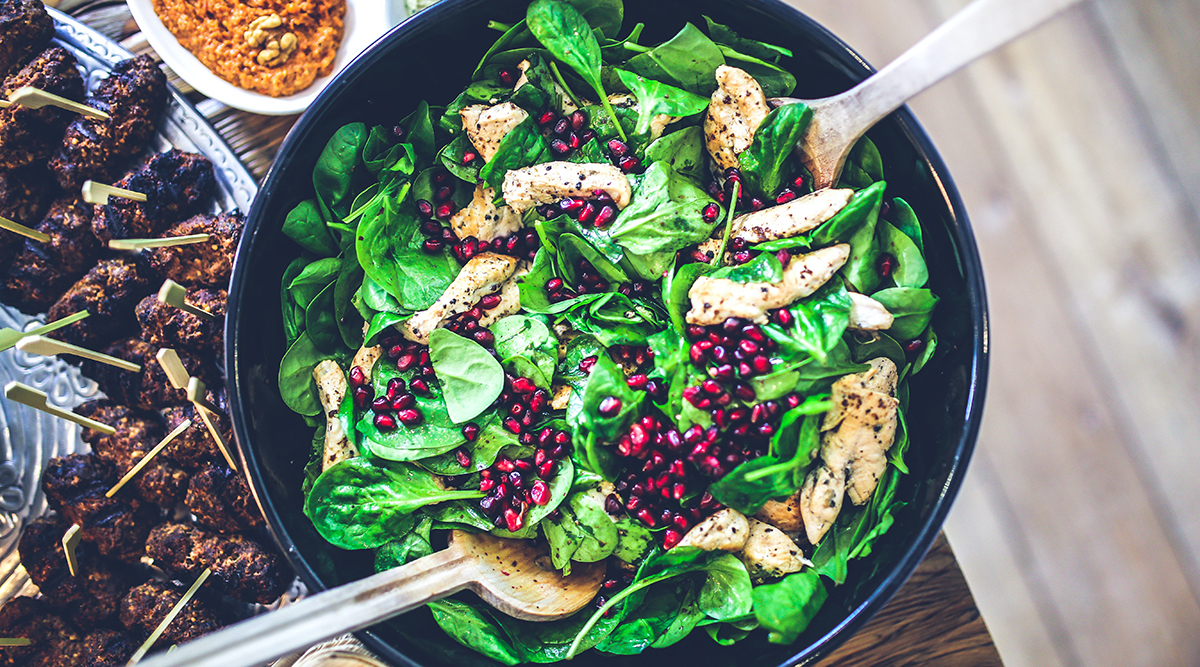
Nutrient Density Key to Unlocking Healthy Dietary Patterns
The 2020-2025 Dietary Guidelines for Americans asserts nutritional needs should be met with foods and beverages that are nutrient dense, but what does this mean and how does it translate to better overall health and a reduction in the risk of diet-related chronic diseases?

You’ve undoubtedly heard the term “empty calories.” This expression is derived from the concept that a variety of foods prevalent in the American diet are high in calories but low in nutrients. These same energy-rich, nutrient-poor foods are associated with a myriad of health conditions from overweight and obesity to other diet-related chronic diseases.
The 2020-2025 Dietary Guidelines for Americans asserts nutritional needs should be met with foods and beverages that are the exact opposite of “empty calories”—specifically nutrient-dense foods and beverages. Nutrient-dense foods and beverages provide vitamins, minerals, and other health-promoting components with no or little added sugars, saturated fat, and sodium.
Why is nutrient density important?
Nutrient density refers to the nutrient content in relation to the energy content, or calories, in a particular food, thus making it a useful measure to choose a healthy option. A healthy dietary pattern comprised of nutrient-dense food and beverage products can help people achieve and maintain good health and reduce the risk of diet-related chronic diseases throughout all stages of the lifespan.
For example, two containers of yogurt may have a similar number of calories. But after looking at the Nutrition Facts label, you may find that one has more protein, calcium, and vitamin D with less added sugars, making it the more nutrient-dense option of the two.
Which foods are nutrient dense?
A wide array of food is considered nutrient-dense, including vegetables, fruits, grains (especially whole grains), low-fat or fat-free dairy products, lean meats, eggs, seafood, beans, peas, lentils, nuts, seeds, and soy products. Choosing a variety of foods within these categories, while avoiding or limiting added sugars, saturated fat, and sodium, will provide nutrients without an excess of calories.
What is the nutritional impact of how and where foods are prepared?
It’s important to note that how foods are prepared can have an impact on the nutrient density of the final meal. For example, a grilled chicken breast that is seasoned with herbs and spices would be considered a more nutrient-dense meal than a fried chicken breast with the same seasonings because of additional calories from the oil used in frying. Similarly, Brussel sprouts sautéed in butter and seasoned with herbs and spices would be less nutrient dense compared to steamed Brussel Sprouts with the same seasonings.
In terms of whether a dish is more nutrient dense when cooked at home as opposed to a restaurant, it all comes down to the ingredients used and preparation method. The U.S. Food and Drug Administration (FDA) menu labeling regulations require certain restaurants and similar retail food establishments to provide calorie and nutrition information for standard menu items. When available, this information can help people make healthier choices when eating away from home.
Simple substitutions for a more nutrient-dense diet
Every time you reach for a food or beverage, you have a choice—contribute to healthy dietary patterns or perpetuate unhealthy habits. Making small changes to the foods you eat each day can have a significant impact on dietary patterns over time. Here are a few nutrient-dense food swaps to help you get started.
| Instead of | Eat this |
| White rice | Brown rice |
| White bread and pasta | Whole grain bread or pasta |
| Sugary cereal | Oatmeal with fruit or whole wheat cereal |
| Sour cream or sweetened yogurt | Plain non-fat or low-fat Greek yogurt |
| Sweetened applesauce | Unsweetened applesauce |
| Regular canned vegetables | Low-sodium canned or fresh vegetables |
| Fried vegetables | Roasted vegetables |
| Chips | Crunchy vegetables or unsweetened/unsalted nuts |
| Candy or cookies | Whole fruit or unsweetened dried fruit |
| Mayonnaise | Hummus |
| Butter | Vegetable oil |
| Whole milk | Low-fat or no-fat milk |
| Soda | Sparkling Water |
Opportunities for Science of Food Professionals
In a recent consumer survey conducted by the International Food Information Council, 4 in 10 consumers said that nutrient-dense foods should always be part of a healthy diet.
As consumers become more conscious of the nutrient density of the foods they eat, science of food professionals will be challenged to consider the entire composition of food and beverage products to provide nutrient-dense options that consumers can easily include in a healthy dietary pattern.
Helpful Resources
For more information on the 2020-2025 Dietary Guidelines for Americans, check out New U.S. Dietary Guidelines Encourage People to Make Every Bite Count on the Brain Food Blog and Do the New Dietary Guidelines for Americans Leave Key Questions Unanswered? in the March 2021 issue of Food Technology magazine. You can also find the complete dietary guidelines along with frequently asked questions and additional resources online.
References
International Food Information Council. Nutrient Density and Health. 20 August 2020. https://foodinsight.org/consumer-survey-nutrient-density-and-health/
U.S. Department of Agriculture and U.S. Department of Health and Human Services. Dietary Guidelines for Americans, 2020-2025. 9th Edition. December 2020. https://www.dietaryguidelines.gov
U.S. Food and Drug Administration. Menu Labeling Requirements. 20 April 2020. https://www.fda.gov/food/food-labeling-nutrition/menu-labeling-requirements
